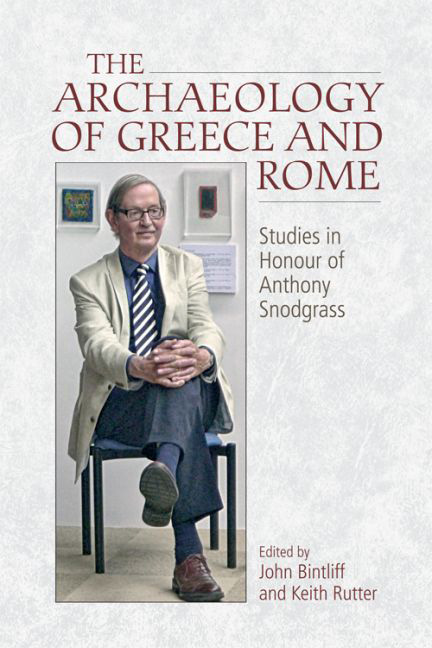Book contents
- Frontmatter
- Contents
- Preface
- List of Contributors
- List of Abbreviations
- Section I Prehistory
- Section II Around Homer
- Section III The Archaic and Classical Greek World
- Section IV The Greeks and their Neighbours
- Section V The Roman and Much Wider World
- Section VI The Scholar in the University and in the Field: Personal Histories
- 18 Anthony in Edinburgh
- 19 Anthony McElrea Snodgrass and the Classics Faculty in Cambridge: A Personal Appreciation
- 20 The First Thirty-Six Years of the Boeotia Project, Central Greece
- Index
20 - The First Thirty-Six Years of the Boeotia Project, Central Greece
from Section VI The Scholar in the University and in the Field: Personal Histories
Published online by Cambridge University Press: 26 May 2017
- Frontmatter
- Contents
- Preface
- List of Contributors
- List of Abbreviations
- Section I Prehistory
- Section II Around Homer
- Section III The Archaic and Classical Greek World
- Section IV The Greeks and their Neighbours
- Section V The Roman and Much Wider World
- Section VI The Scholar in the University and in the Field: Personal Histories
- 18 Anthony in Edinburgh
- 19 Anthony McElrea Snodgrass and the Classics Faculty in Cambridge: A Personal Appreciation
- 20 The First Thirty-Six Years of the Boeotia Project, Central Greece
- Index
Summary
My first encounter with Anthony was in 1973 and the circumstances of our friendship and subsequent collaboration were entirely in keeping with his delightfully unorthodox approach to life. He was Assistant Director on the Menelaion excavation; I was a PhD student cycling all over the Plain of Sparta to analyse its long-term settlement history against its physical geography. One day quite out of the blue he said to me: ‘I've always wanted to bathe naked in the River Eurotas like the Spartans, are you game?’ So in the siesta in mid-summer down we went, stripped off and entered the river. Actually it was hardly 6 inches deep so we had to lie flat even to get a mild feeling of actually being in the river, all the while trying to avoid a series of unpleasant-looking pieces of white paper flowing downstream from Sparta town. Soon a group of local women appeared and we beat a hasty retreat. And after this male-bonding event, not much later Anthony suggested we start our own project, somewhere rather free of competition yet with a rich prehistory and history. So 1978 with Annemarie as part of a trio, we toured Boeotia and visited almost all the known significant sites (Fig. 20.2).
The Boeotia Project (Fig. 20.3) was intended to be a ten-year enterprise, but in fact our joint fieldwork in surface survey only stopped in the mid-1990s, by which time we had surveyed the urban sites of Thespiai, Haliartos and Askra, as well as Hyettos and large areas of their dependent countrysides (Fig. 20.4). Since that time Anthony has been busy virtually every year assisting me with the study of the finds (Fig. 20.5) and with preparation for the final monographs of the project, and most recently (Fig. 20.6), as always with Annemarie, revisiting sites found by us long ago to evaluate their alteration with time and put them into a GPS-correct location. At the end of the 1990s I moved to Leiden and was obliged to train Classical Archaeology students in the field; this led to our adding the urban survey of Tanagra and Koroneia with parts of their countryside (Fig. 20.7) to our windows into Boeotian long-term settlement history.
- Type
- Chapter
- Information
- The Archaeology of Greece and RomeStudies In Honour of Anthony Snodgrass, pp. 447 - 457Publisher: Edinburgh University PressPrint publication year: 2016



